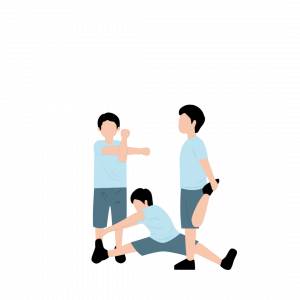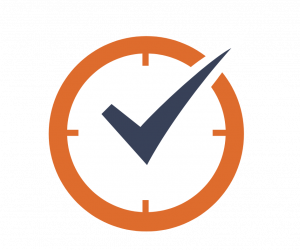
Ramadan is a sacred month observed by Muslims worldwide, characterized by fasting from dawn until sunset. While fasting is an essential aspect of Ramadan, maintaining physical activity during this period is equally important for overall health and well-being. Engaging in regular physical activity can help individuals maintain fitness levels, manage weight, and promote overall health, even while fasting. From strategic timing to essential precautions, incorporating physical activity during this period requires careful consideration to ensure a safe and fulfilling experience.
Optimal Timing for Exercise During Ramadan
After Sahur (Pre-Dawn Meal):
 One of the opportune times for workouts during Ramadan is after Sahur, the pre-dawn meal consumed before the fast begins. At this time, the body receives energy from the pre-dawn meal, providing a source of fuel for physical activity. Engaging in light-intensity exercises post-Sahur can help invigorate the body and set a positive tone for the day ahead. However, it’s crucial to avoid vigorous activity or excessive workouts as there will be no opportunity to refuel or rehydrate until time to break fast and you need to conserve energy for the fasting hours ahead. However, light activities like slow jogging, brisk walking, or gentle stretching are generally safe and can even be beneficial for overall well-being.
One of the opportune times for workouts during Ramadan is after Sahur, the pre-dawn meal consumed before the fast begins. At this time, the body receives energy from the pre-dawn meal, providing a source of fuel for physical activity. Engaging in light-intensity exercises post-Sahur can help invigorate the body and set a positive tone for the day ahead. However, it’s crucial to avoid vigorous activity or excessive workouts as there will be no opportunity to refuel or rehydrate until time to break fast and you need to conserve energy for the fasting hours ahead. However, light activities like slow jogging, brisk walking, or gentle stretching are generally safe and can even be beneficial for overall well-being.
One Hour Before Iftar (Breaking Fast):
 Exercising approximately one hour before Iftar can optimize energy utilization. Following the workout, Iftar serves as an opportunity to replenish lost energy stores and hydrate immediately. Nonetheless, it is essential to approach workouts before Iftar with moderation, opting for light-intensity activities such as slow jog or light weight training to prevent overexertion especially since your energy during this time is already limited. It is essential to consider whether your body will have enough energy reserves to sustain your workout effectively.
Exercising approximately one hour before Iftar can optimize energy utilization. Following the workout, Iftar serves as an opportunity to replenish lost energy stores and hydrate immediately. Nonetheless, it is essential to approach workouts before Iftar with moderation, opting for light-intensity activities such as slow jog or light weight training to prevent overexertion especially since your energy during this time is already limited. It is essential to consider whether your body will have enough energy reserves to sustain your workout effectively.
One or Two Hours After Iftar:
 For many individuals, exercising in the evening after breaking the fast (Iftar) may be the most suitable option. This timing allows you to fuel and hydrate both before and after exercise, optimizing performance and recovery. However, it is advisable to wait for at least an hour after consuming Iftar to allow for proper digestion and hydration before engaging in intense physical activity. During this period, the body is primed to convert nutrients into energy, allowing for various intensities of physical activity. Be it slow jogging or moderate intensity exercise the post-Iftar window offers flexibility and ample energy reserves to support your fitness goals.
For many individuals, exercising in the evening after breaking the fast (Iftar) may be the most suitable option. This timing allows you to fuel and hydrate both before and after exercise, optimizing performance and recovery. However, it is advisable to wait for at least an hour after consuming Iftar to allow for proper digestion and hydration before engaging in intense physical activity. During this period, the body is primed to convert nutrients into energy, allowing for various intensities of physical activity. Be it slow jogging or moderate intensity exercise the post-Iftar window offers flexibility and ample energy reserves to support your fitness goals.
Precautions for Exercise During Ramadan:
 Stay Hydrated: Proper hydration is crucial, especially during fasting hours. Aim to drink at least 8 glasses of water during non-fasting hours to replenish fluids lost during exercise. Additionally, opt for water-rich foods such as fruits and vegetables to increase hydration levels and support overall well-being
Stay Hydrated: Proper hydration is crucial, especially during fasting hours. Aim to drink at least 8 glasses of water during non-fasting hours to replenish fluids lost during exercise. Additionally, opt for water-rich foods such as fruits and vegetables to increase hydration levels and support overall well-being
 Listen to Your Body: Pay close attention to how your body responds during exercise, particularly while fasting. Adjust the intensity and duration of your workouts accordingly. If you experience symptoms such as dizziness, weakness, or excessive fatigue, prioritize rest and consider reducing the intensity of your exercise routine. It is essential to honor your body’s signals and adapt your workouts to accommodate the fasting period.
Listen to Your Body: Pay close attention to how your body responds during exercise, particularly while fasting. Adjust the intensity and duration of your workouts accordingly. If you experience symptoms such as dizziness, weakness, or excessive fatigue, prioritize rest and consider reducing the intensity of your exercise routine. It is essential to honor your body’s signals and adapt your workouts to accommodate the fasting period.
 Avoid Overexertion: Ramadan is a time for maintenance, not pushing limits. Avoid high-intensity interval training (HIIT) and focus on gentle activities such as a slow jog, walking, yoga, or light resistance training to prevent muscle loss. Keeping your heart rate below 65% of your maximum ensures a manageable intensity level. Aim to keep each exercise session between 30 minutes to balance physical activity with energy conservation.
Avoid Overexertion: Ramadan is a time for maintenance, not pushing limits. Avoid high-intensity interval training (HIIT) and focus on gentle activities such as a slow jog, walking, yoga, or light resistance training to prevent muscle loss. Keeping your heart rate below 65% of your maximum ensures a manageable intensity level. Aim to keep each exercise session between 30 minutes to balance physical activity with energy conservation.
 Eat Nutritious Meals: Consume balanced meals during Sahur and Iftar to support energy levels and muscle repair. Include a combination of carbohydrates, protein, healthy fats, fruits, and vegetables in your meals to provide essential nutrients. Prioritize nutrient-dense foods that sustain energy levels throughout the fasting period and aid in recovery after exercise.
Eat Nutritious Meals: Consume balanced meals during Sahur and Iftar to support energy levels and muscle repair. Include a combination of carbohydrates, protein, healthy fats, fruits, and vegetables in your meals to provide essential nutrients. Prioritize nutrient-dense foods that sustain energy levels throughout the fasting period and aid in recovery after exercise.
 Incorporate Warm-Up and Cool-Down: Before starting your workouts, engage in a proper warm-up routine to prepare your muscles and joints for exercise. This helps reduce the risk of injury and improves overall performance. Similarly, conclude your workouts with a cool-down session to aid in recovery, prevent soreness, and promote flexibility.
Incorporate Warm-Up and Cool-Down: Before starting your workouts, engage in a proper warm-up routine to prepare your muscles and joints for exercise. This helps reduce the risk of injury and improves overall performance. Similarly, conclude your workouts with a cool-down session to aid in recovery, prevent soreness, and promote flexibility.
 Environmental Considerations: Be mindful of environmental factors such as temperature and air quality, particularly if you are exercising outdoors. Check the weather forecast and air quality index before heading out for outdoor workouts, and consider exercising indoors during hot or humid weather to prevent overheating and dehydration
Environmental Considerations: Be mindful of environmental factors such as temperature and air quality, particularly if you are exercising outdoors. Check the weather forecast and air quality index before heading out for outdoor workouts, and consider exercising indoors during hot or humid weather to prevent overheating and dehydration
 Timing Your Workout: For night workouts, aim to complete your exercise routine at least an hour before bedtime. This allows your body temperature to naturally decrease, promoting better sleep quality. Creating a buffer period between exercise and sleep helps your body transition into a relaxed state conducive to rest, enhancing overall recovery and well-being during Ramadan
Timing Your Workout: For night workouts, aim to complete your exercise routine at least an hour before bedtime. This allows your body temperature to naturally decrease, promoting better sleep quality. Creating a buffer period between exercise and sleep helps your body transition into a relaxed state conducive to rest, enhancing overall recovery and well-being during Ramadan
Conclusion:
Exercise during Ramadan can be a rewarding way to maintain fitness levels and promote overall well-being. By timing your workouts strategically and taking essential precautions you can ensure a safe and fulfilling exercise experience throughout the holy month. Hence, Ramadan can be a time for both spiritual reflection and physical vitality.
Raihana, Dietitian













